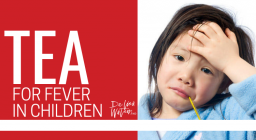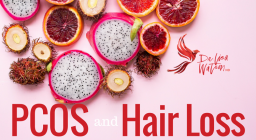
91% of Canadians have detectable levels of bisphenol A (BPA) in their urine according to recent data from the Canadian Health Measures Survey (CHMS).
This study represents the first time BPA levels were measured at a national level in Canada. Urine samples from 5,600 Canadians aged 6 to 79 years were collected between March 2007 and February 2009 at 15 sites across Canada.
Canadian Teens Have Highest BPA Levels
The average Canadian has a mean concentration of urinary BPA of 1.16 micrograms per litre. International studies have found similar results with mean concentrations ranging from 1 to 3 micrograms per litre.
Concentrations of BPA were highest in the teens – people aged 12 to 19 had mean concentrations of 1.50 micrograms per litre. That is nearly 30% higher than the mean concentration. Children aged 6 to 11 also had concentrations higher than adults aged 40 to 79.
Teens may have higher levels due to a higher intake of BPA-containing foods, higher intake of food relative to their body size, or due to absorption, metabolism or excretion differences.
It is of great concern that teens and children have higher levels of BPA than older adults because exposure to hormone-like substances during the different developmental stages of childhood and adolescence can cause permanent, lifelong changes in the way cells function.
What is BPA?
 Bisphenol A (BPA) is an industrical chemical used in the production of polycarbonate plastic (for food containers and water bottles) and epoxy resins (most commonly used as a protective lining in canned food and beverages). BPA does not occur naturally in the environment.
Bisphenol A (BPA) is an industrical chemical used in the production of polycarbonate plastic (for food containers and water bottles) and epoxy resins (most commonly used as a protective lining in canned food and beverages). BPA does not occur naturally in the environment.
The main source of BPA exposure is from ingestion of foods in BPA-laden containers, although BPA is also found in drinking water, soil, dust, air, and consumer products. BPA can migrate into food from food containers, especially when containers are heated, as well as from repeat-use plastic containers.
BPA has a short half-life in the body (less than six hours). The finding of urinary BPA in 91% of Canadians suggests that Canadians are having continual and widespread exposure to BPA.
Health Effects of BPA Exposure
Studies are emerging that demonstrate negative health impacts from low level exposure to BPA, especially early in life.
BPA is a recognized endocrine disruptor (has hormonal impacts in the human body). The structure of BPA is similar enough to estrogen (the predominant female hormone) that it can bind to estrogen receptors in the body and have effects similar to naturally occurring estrogen.
It is this similarity to the estrogen molecule that causes concern. Although the level of BPA found in the CHMS study is low it is still a thousand times higher than natural levels of estrogen found in the body.
Some health impacts of BPA that have been proposed in scientific literature include:
- Reproductive toxicity – including effects on fertility and embryo development
- Permanent changes to the genitourinary tract
- Increased risk of breast cancer
- Early puberty in girls
- Increased prostate weight and increased risk of prostate cancer
- Decreased testosterone
- Hyperactivity and aggression
- Insulin resistance and type II diabetes
- Obesity
- Asthma
- Cardiovascular system abnormalities
Protecting Yourself and Your Family from BPA
Canada has been making headlines since 2008 when it banned BPA in baby bottles. However, there are still no guidelines on the amount of BPA allowed into plastic bottles, aluminum cans, and other food containers that are the primary source of BPA exposure for Canadians.
In order to protect yourself and your family from the harmful effects of BPA the Environmental Working Group (EWG) have prepared a list of eight suggestions for minimizing BPA exposure.
- Eat Fewer Canned Foods

The easiest way to lower your BPA intake is to avoid foods that come into contact with the industrial chemical. Choose fresh or frozen fruits and vegetables – which are usually higher in nutrients and taste better than canned foods! - Choose Cardboard and Glass Containers Over Cans
When possible select foods that come in cardboard containers (such as Tetra-packed soups, juices and sauces) and glass containers. - Don’t Microwave Plastic Food Containers
Polycarbonate plastic, used in the packaging for many microwaveable foods, can break down at high temperatures and release BPA. Most polycarbonate containers are marked with a number 7 recycling code – indicating a BPA-containing plastic. - Choose Plastic or Glass Bottles for Beverages
Canned juice and soda often contain BPA, especially if they are in cans lined with BPA-laden plastic. Use a stainless steel water bottle for water, or a recyclable plastic water bottle which does not have the number 7 recycling symbol. Plastic bottles with the recycling numbers 1, 2 or 4 do not contain BPA and are safer choices. - Turn Down the Heat
To avoid BPA in your hot foods and liquids, use glass or porcelain containers, or stainless steel containers without plastic liners. - Use BPA-free Baby Bottles
Canada banned the sale of BPA-containing baby bottles in 2008. Glass, stainless steel, and BPA-free plastic baby bottles are the best choices. - Use Powdered Infant Formula Instead of Pre-Mixed Liquid Formulas
Breastfeeding is best. But if you must use a formula select a powdered formula over a liquid formula. Liquid formulas contain more BPA than powdered versions. - Practice Moderation
The fewer canned foods and beverages you consume, the less your exposure to BPA, but you don’t have to cut out canned foods altogether to reduce your BPA exposure and lower your potential health risks. Eat less canned food overall, and limit your intake of canned foods that are high in BPA
Foods Highest in BPA |
| Chicken soup and other soups |
| Infant formula (liquid) |
| Ravioli and canned pastas |
| Tomato sauces |
Source: Environmental Working Group
As parents of children and teens, we can help to promote lifelong health by helping them to make healthy choices at young ages. Encourage your family to eat fewer canned foods and decrease exposure to BPA by following the guidelines above.
References:
Bushnik T., Haines D., Levallois P., Levesque J., Van Oostdam J., Viau C. Statistics Canada. Lead and bisphenol A concentrations in the Canadian population. Available online at: http://www.statcan.gc.ca/pub/82-003-x/2010003/article/11324-eng.htm. Accessed August 31, 2010.
Environmental Working Group. Bisphenol A: Toxic Plastic Chemicals in Canned Food: Consumer tips to avoid BPA exposure. Available online at: http://www.ewg.org/bisphenol-a-info. Accessed August 31, 2010.
Statistics Canada. The Daily, Monday August 16, 2010. Canadian Health Measures Survey: Lead, bisphenol A and mercury. Available online at: http://www.statcan.gc.ca/daily-quotidien/100816/dq100816a-eng.htm. Accessed August 31, 2010.
Statistics Canada. Publications: Health Fact Sheets. Bisphenol A concentrations in the Canadian population, 2007 to 2009. Available online at: http://www.statcan.gc.ca/pub/82-625-x/2010002/article/11327-eng.htm. Accessed August 31, 2010.

















[…] Read more from the original source: Canadian Teens Have Highest Levels of BPA: Study | Dr. Lisa Watson […]
Canadian Teens Have Highest Levels of BPA: Study | Dr. Lisa Watson…
I found your entry interesting do I’ve added a Trackback to it on my weblog :)…
[…] This post was mentioned on Twitter by Daniel Wilson, Lisa Watson ND. Lisa Watson ND said: Canadian Teens Have Highest Levels of BPA: Study http://bit.ly/9tmMed […]